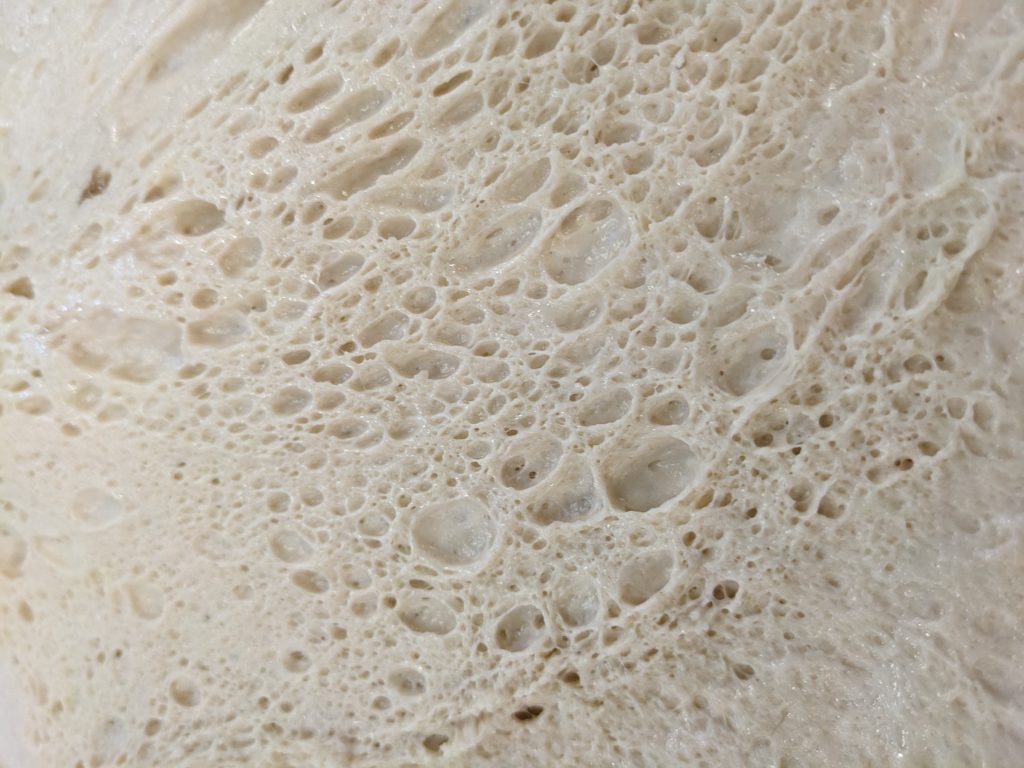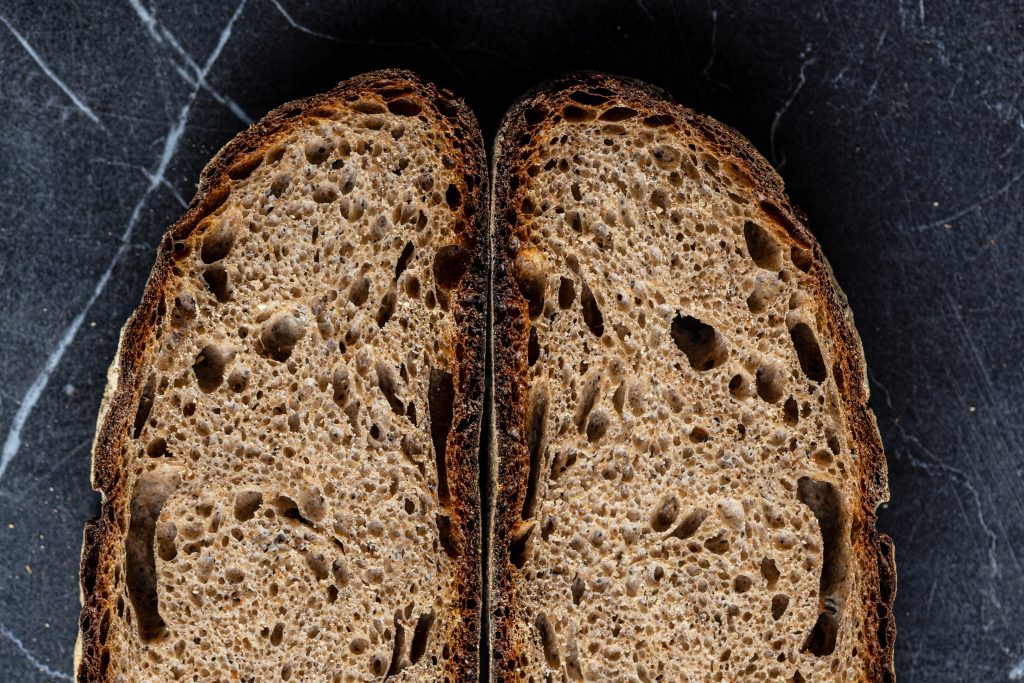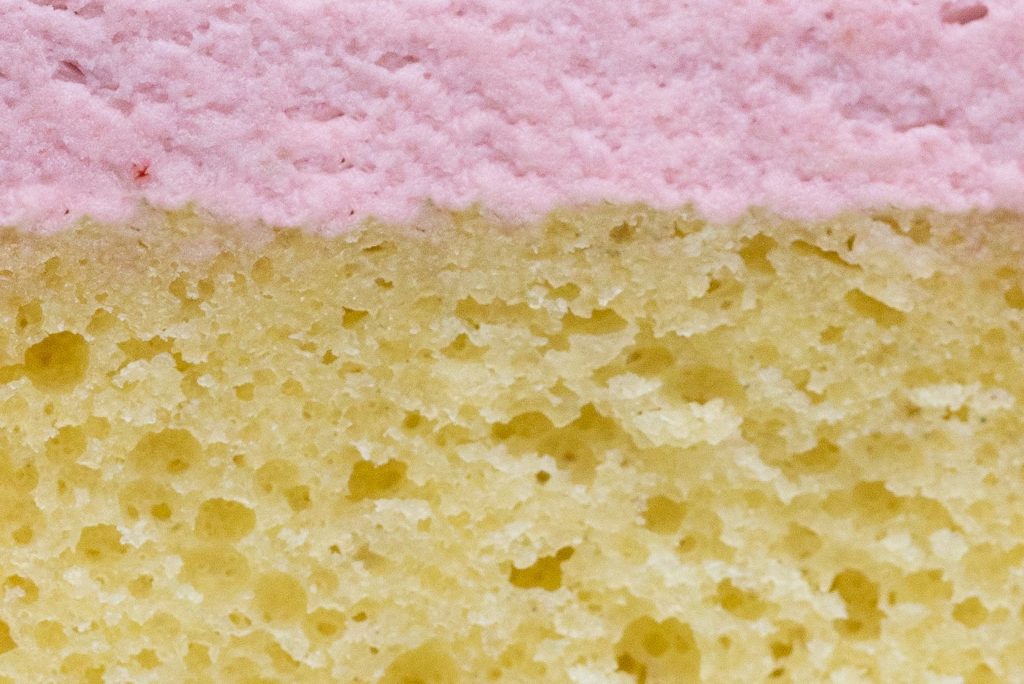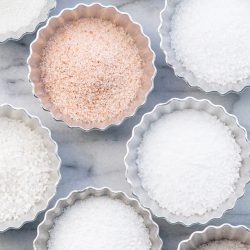This year we’re writing a series of blog posts dedicated to sharing with home bakers guides to essential ingredients we bake with at the Bakehouse and at BAKE!Ⓡ, our hands-on teaching bakery for home bakers. As true artisan bakers, we use traditional recipes, time-honored processes, our hands, and flavorful ingredients, many locally sourced, to make our artisan bread, pastries, cookies, and cakes. Our baked goods, all hand made from raw ingredients, are rooted in age-old American, European, and Jewish traditions. Thus far, we’ve covered Baker’s Yeast, Salt, and Wheat Flour in our Series of Ingredients Guides for Home Bakers.
For the fourth installment of the Series, we’re delving into Gluten, the critical structure of most baking. How is it formed and and how does it impact the texture, structure, and rise of baked goods?

What’s Gluten and How is it Formed?
Gluten is the elastic protein matrix that forms in doughs and batters when wheat flour is combined with water or a liquid including water, like milk. Wheat flour contains two primary proteins–gliadin and glutenin–that are the building blocks of gluten. When these two proteins combine with water, they immediately start forming bonds that link together, developing stretchy, elastic strands that further strengthen into a network or web as you mix batters or knead doughs. Imagine in your mind a web of interconnecting plastic or rubber bands that can extend and bounce back into their original length.
Once formed in a batter or dough, this gluten network traps gas bubbles from yeast fermentation or chemical leavening (i.e. baking soda and baking powder). The stronger the network, the more gas it can hold, lending more air and thus a higher rise to your baked goods as well as structure so they hold their shape and remain intact throughout the baking process.

At the same time, it’s important to keep in mind that the more you develop this gluten network in your batter or dough, through mixing and/or kneading, the interconnected strands become longer and stronger, which leads to more chewiness and structural strength in what you’re baking. This can be a good thing if you’re making yeasted or naturally leavened artisan bread, as such doughs typically require a strong gluten network to capture the gases produced during fermentation and baking. If, however, you’re making a soft, tender cake, developing a chewy, stretchy gluten network in your batter is the last thing you want.
When choosing the right wheat flour for a recipe, it’s crucial to take protein levels into consideration. Usually, the higher the protein content the greater the possibility of developing a strong gluten network. Bread flour typically ranges from 12 to 14%, All-Purpose Flour ranges from 9 to 12%, Pastry Flour contains 8 to 9%, and Cake Flour has about 7 to 8%. These variable percentages of protein content are an indicator of the gluten-forming potential of any given wheat flour and should be taken into account when choosing the right flour to bake with once you’ve settled on a recipe, whether it be artisan sourdough or yeasted breads, pastries, quick breads, cookies, or cakes. Generally speaking, high-protein flours create a strong gluten network, resulting in chewy bread and sturdy baked goods, while low-protein flours make baked goods light, tender, and delicate–perfect for cakes and pastries.

(See All About Wheat Flour, the third installment of the Ingredients Series, for a detailed breakdown of the different types of wheat flour we recommend for home bakers.)
Wheat Varieties & Their Gluten-Forming Potential
| Wheat Varieties & Growing Seasons | Gluten-Forming Potential & Best Baking Uses When Ground into Flour |
|---|---|
| Hard Red – Winter & Spring | Strong Gluten-Forming Potential – Hard red wheat is primarily used to make Bread Flour and Whole Wheat Flour. The high protein content of hard red wheat, which is present in the starchy endosperm, makes it ideal for baking bread and other items that require gluten elasticity. It’s also used to create whole wheat flour, which retains the bran and germ, contributing to a richer flavor and higher nutritional value. Best for yeasted & sourdough bread doughs. |
| Hard White – Winter & Spring | Strong Gluten-Forming Potential – Hard white wheat is primarily used to make White Whole Wheat Flour. It can also be used to make Bread Flour, All-Purpose Flour, and other types of flour, but it’s particularly favored for its mild, sweet flavor and lighter color when milled into whole wheat options. Best for yeasted & sourdough bread doughs. |
| Soft White – Winter & Spring | Low Gluten-Forming Potential – Soft white wheat is primarily used to make Pastry Flour and Cake Flour. These flours are known for their low protein content and low gluten-forming potential, making them ideal for creating tender, flaky, delicate baked goods like cakes, pastries, biscuits, and cookies. |
| Einkorn – Winter & Spring | Some Gluten-Forming Potential – Einkorn is an extra soft wheat with high protein content that is primarily used to make whole Einkorn flour that should not be overworked. It can also be processed into an all-purpose flour by removing some of the bran. Best for non-yeasted breads, cookies, scones, and muffins. |
| Spelt – Winter | Some Gluten-Forming Potential – Spelt is considered a hard wheat and has a higher protein content than soft wheat varieties; yet it’s not as high in gluten as hard red or hard white wheat. It’s primarily used to make whole spelt flour or white spelt flour, which is more refined and comparable to all-purpose flour. Spelt can be a great addition to breads made with hard wheat varieties. It’s great also for cookies, scones, and muffins. |

Gluten’s Role in Baking
Now that we know what Gluten is and how it’s formed in doughs and batters, let’s look at the fundamental role it plays in our baking when gluten development is properly controlled and appropriately aligned with what we’re making, whether it’s a chewy baguette or a delicate, tender cake. A general rule of thumb is that doughs with more gluten development produce baked goods with springier, bouncier, and chewier textures while less gluten development results in baked goods, like cakes and pastries, that are, tender, softer or more delicate.
Here’s a brief breakdown of the role gluten plays in our baking and how to control its development:
Provides Elasticity, Extensibility, and Structure
- A developed gluten network gives the dough elasticity, or its ability to pull or spring back, and extensibility, or its ability to stretch without tearing. These characteristics allow the dough to be stretched and shaped, and to sustain its shape during cooking or baking.
- Gluten also is the architectural glue that keeps cakes, pie crusts, and pastry intact as they bake. It also creates the structure in baked goods, helping them hold their form and rise.
Traps Gases
- During fermentation (when yeast produces carbon dioxide) or leavening (using agents like baking powder), the gluten network traps these gases.
- This trapping action allows the dough to expand and rise, contributing to a light, airy texture in the finished product.
Contributes to Chewiness and Texture
- The more gluten is developed (through mixing and kneading), the stronger and longer their strands become. This development leads to a chewier texture, desirable in foods like bread and pasta.
- For delicate items like cakes or pastries, minimal gluten development is preferred to achieve a tender crumb.
Retains Moisture
- Gluten also helps retain moisture within baked goods, contributing to their freshness and preventing them from becoming too dry and crumbly.
Controlling Gluten Development – Factors to Consider
- Flour selection: Different flours have varying protein contents and thus different gluten-forming potential. In general, flours with higher protein content—more glutenin and gliadin—develop stronger and more complex gluten networks.
- High-protein flours (e.g., bread flour) promote strong gluten development for chewy baked goods, like bread.
- Low-protein flours (e.g., cake flour) result in weaker gluten, ideal for tender cakes and pastries.
- Amount of Water or Liquid Containing Water: Gluten can’t form unless water or any water-based liquid is added to flour, so it’s just as important as flour in doughs and batters. A good recipe worth its proverbial salt will include just the right amount of water to form an effective gluten network, whether it’s strong or weak. If you add too much water to a bread dough mix, it can take a very long time to form the needed gluten matrix.
- Manual Working of Dough – Mixing, Kneading, or Folding: The more any dough or batter is mixed or kneaded or folded, the stronger its gluten network tends to get.
- Resting the Dough after Kneading: Resting helps the gluten network relax and distribute more evenly throughout the dough, creating a more pliable dough that’s easier to work with. Resting also allows the added water to fully hydrate the flour, further contributing to gluten development. A rested dough is easier to stretch and shape, making it ideal for forming into various shapes like loaves or rolls.
- Other Baking Ingredients Affecting Gluten Development
- Fat: Fats, like butter, egg yolks, oil or milk tenderize doughs and batters by coating glutenin and gliadin proteins. They thus can interfere with and limit gluten development, resulting in baked goods with softer crusts and a tender crumb.
- Sugar: Sugar appears in small quantities in many bread recipes because it can jump-start yeasty fermentation. But in larger quantities, it’s considered a tenderizer. It works by attaching to water molecules before they can bind with glutenin and gliadin proteins, interrupting proper hydration of the flour and initially delaying the development of gluten. This contributes to a tender and moist dough, like brioche, even after it’s kneaded to develop a strong gluten structure.
- Salt: Salt strengthens the gluten network, leading to a more elastic and extensible dough.
After a long, established career as a Ph.D. art history scholar and art museum curator, Lee, a Michigan native, came to the Bakehouse in 2017 eager to pursue her passion for artisanal baking and to apply her love of history, research, writing, and editing in a new exciting arena. Her first turn at the Bakehouse was as a day pastry baker. She then moved on to retail sales in the Bakeshop, followed by joining the Marketing Team and becoming the Bakehouse’s designated culinary historian. In addition to her retail sales and marketing work, she’s a member of the Bakehouse’s Grain Commission, co-author and editor of the Bakehouse's series of cookbooklets, and a regular contributor to the BAKE! Blog and Zingerman’s Newsletter, where she explores the culinary, cultural, and social history and evolution of the Bakehouse’s artisan baked goods.



